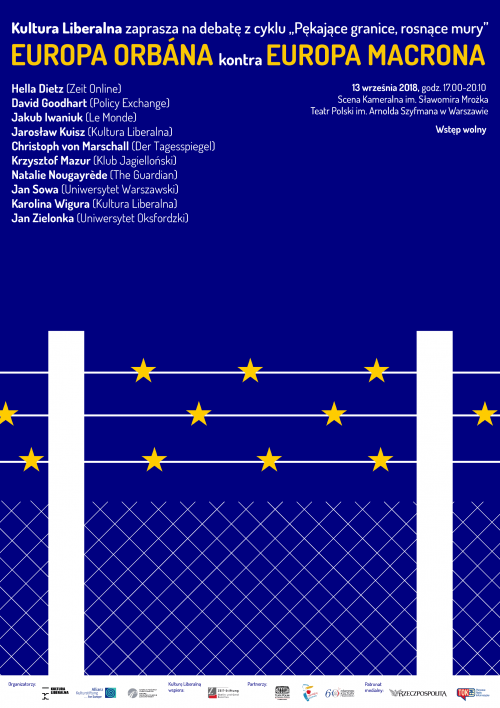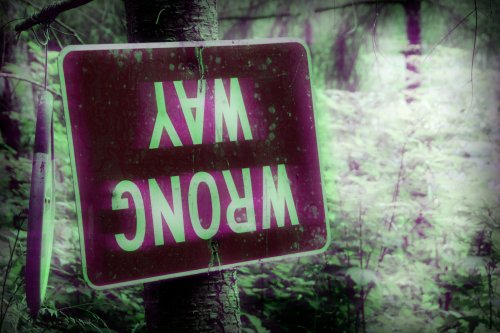The debate about the recently ended 25-year period of Polish history is becoming enlivened by the voices of critics of modernity. This simple story of historical triumph is now contrasted with apocalyptic perspectives. No one has yet managed to fully grasp the ambivalence of the Third Polish Republic – its skyscrapers, its street markets and Mutant Ninja Turtles.
Marshall Berman, the recently deceased American Marxist, in his book “All that is Solid Melts Into Air” describes something he calls “the experience of modernity”, by which he means the chaos of social, technological and political changes which have been affecting the lives of men and women since the second half of the 18th Century and the times of the Enlightenment. Wave after wave of modernity have carried promises of adventure, of progress and self-realisation, and yet at the same time they are a threat to everything which we know and value – to our traditional communities and their mores. Berman, a passionate literature expert, follows the pains and the hopes involved in modernity as experienced by metropolitan folk: Baudelaire in Paris, Dostoyevsky in Petersburg and of course his own New York, or more precisely the dramatically changing Bronx of the 1960s, which is where he grew up.
Ninja Tutrtles on Warsaw housing estates
If Berman were to include Poland in his list of modernist landscapes, he could pick out several examples: it could be the 19th century aggressive and energetic capitalism of the “Promised Land” (“Ziemia obiecana”, a 1898 novel by the Polish author and Nobel laureate, Władysław Reymont), or else the bustle of post-war social changes described in “A revolution beyond dreams” („Prześniona rewolucja”) by Andrzej Leder. Or it could be post-1989 transformation Poland. As for symbols of modernity, these could be skyscrapers and ran-down markets nestling between communist era tower blocks, disco polo music on cable radio and TV stations, as well as cream of broccoli soup replacing the traditional chicken broth at Polish weddings. We could even find room for Gary Cooper, as appearing on the classic posters encouraging people to vote in 1989 (“High noon”), as well as the bankrupt, decomposing Gdansk shipyards.
The power of Berman’s narrative comes from his ability to present and maintain the ambivalent aspects of modern transformations; on being able to capture the stories of its winners and losers. He has also developed a different, key ability – in his stories he includes that which appears to be spurious or marginal. Hence, our history could not do without the gazes of children of that time, who also delighted in the immense attraction of all that was new. All we need to do is compare the cute, yet rather tame Uszatek Bear from Polish television of yore with the world of Mutant Ninja Turtles, to feel the promise new adventures must have held. Yes, Ninja Turtles also have a place in this story of the Third Polish Republic.
Marble and glass, poverty and despair
Berman’s imagination could help overcome the weakness in Polish tales of the Third Republic, often offset by the amazing history of both its successes and bitter failures. On the one hand, the narrative within Poland is dominated by tales of hard-won political freedoms, the growing incomes and social advances; on the other hand, we are also presented with diagnoses of an apocalyptic nature. One of these was presented by Marcin Król in his interview for Liberal Culture (issue 260), in which he described contemporary Poland using conservative and Leftist conventions, in terms of critiques of modernity. In his diagnosis, Poland appears to be a world of ruthless competition, alienation and brutal interactions in places of work, gaping economic inequality, bureaucratic (and yet semi-privatised) academia, along with widespread, primitive consumption.
This rhetoric of economic crises and extraordinary circumstances has massive power, not only because it recounts our all too real problems and pains. It is also considered to be testimony of moral integrity and the ethos of any intellectual performing their duty – criticising the world of social activism. Great thinkers do tend to be gloomy in nature.
It also fits with social perceptions of many people who are tired of being told how great the world they live in is. Unfortunately, such criticism is burdened with serious flaws – first of all, it covers important areas of the Polish experience of the Transformation, and secondly, it doesn’t offer any pointers as to what action to take – when it comes to complex socio-political processes, it simply offers a fatalistic tone and moralising gestures.
Our discussions – according to Berman – can become truly interesting only once we are able to grasp all of the ambivalence inherent in the Third Polish Republic – contradictions which constitute Polish modernity. Or when points of view which avoid the naïve idealising of the past emerge, along with perspectives which manage to appreciate the real achievements of modern formations, while at the same time not to forget about those who have been failed by the process of modernisation and actively present ways in which they can be helped. In meeting these conditions, we see the emergence of ideological formations and political proposals, which would not characterise the Polish market economy solely through the prism of overburdened businesspeople or else huge foreign capital. These would not describe Polish society as affected by “conservative revolution” or else its opposite – the possibly rapidly expanding “gender ideology”.
Towards a wise centre
Analyses of young intellectual circles in Poland today gives cause for hope – it turns out that it is possible to create unexpected ideological constellations – be a socialist Christian, a community-minded liberal or a conservative actively promoting partnership models in the family context. Any attitude which emerges out of the acknowledgement of need to differentiate between “packaged identities” of both Left and Right, can of course meet with serious criticisms, running the risk of being accused of banality, or of utilising the naïve rhetoric of healthy logic. Faced with a lack of aggressive political attitude, it is at risk of doing nothing more than affirming the status quo, adapting to current structures without attempting to radically modify the political landscape.
In what is being proposed here we are not concerned with determinedly searching for a golden mean between Left and Right, but with an attempt to overcome complications and ambiguities of our time, about a multilateral approach. A good example of this is the story of Berman – how to present the ambivalence of the modern day, acknowledging its achievements without justifying its failings, and at the same time to retain the energy needed to act and think, to keep asking questions about the best way to implement modern values in today’s world. In the case of the Third Polish Republic, this questioning will focus on how social is our – constitutionally established – “social market economy”.
A description of Polish modernity therefore demands something described in Leszek Kołakowski’s essay “The priest and the jester” (“Kapłan i błazen”): “a burdensome reconciliation of those elements which we find most difficult to agree on”: “goodness with universal indulgence”, “courage without fanaticism”, “intelligence without discouragement” and “hopes without blindness”. This is the almost impossible task of trying to formulate accurate diagnoses of our times. The Third Polish Republic still hasn’t been provided with such a chronicle.
This article is a part of Kultura Liberalna’s book “To place Poland in the centre”. See the table of contents here.




